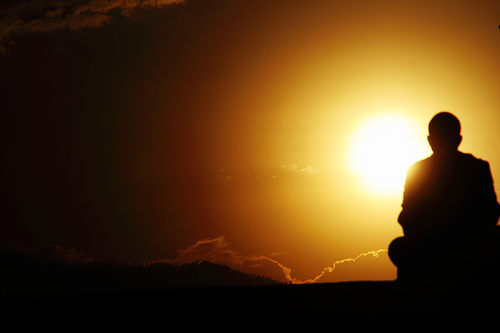Right before COVID-19 distancing measures came into play in
the UK, I was fortunate enough to squeeze in a trip to London, including a
visit to the Wellcome Collection museum. I often see reviews of interesting
exhibitions at the place and wish I could go more often, so I relished the
chance to check out the Play Well feature
that occupied the downstairs gallery (which is usually hosting something on an
intriguing psychology-related theme).
Now, I have to admit I’m not a huge museum person in general
– I usually grow tired and disinterested quite quickly when I visit them - but each
time I’ve been to the Wellcome collection I’ve found their exhibitions to offer
a very engaging experience. Through a thought-provoking mix of historical
artefacts, artwork, video and more, Play Well
explores the impact that play has on our lives – including its benefits to
wellbeing – and how it has changed over the years. The exhibition really struck
a chord with me, and I’d like to share my thoughts on some of the most
pertinent features here.
The paradox of adulthood
I’ve often reflected on what a shame it is that we lose
something of our propensity to play when we become adults, and this exhibition
really brought that sad fact to the front of my mind. Indeed, the very first
thing you see when you walk in the front door is a video of some primary school
children answering questions about play, one of which was something to do with
whether adults need play. Poignantly, a [roughly] 9-year-old matter-of-factly states
that yes, adults do need play, so they can have a break and a rest. It’s a simple
truth, but one that isn’t given anywhere near enough attention in day-to-day
life. It’s an unfortunate paradox that perhaps the very reasons we need play to
help us let go and wind down – increased responsibility, more stress, less time
for doing the things we enjoy – are exactly what rob us of it as we grow up.
One person who talks a lot of sense about this stuff is actress,
author and stand-up comedian Miranda Hart. Her fondness for ‘jollying life up’
shines through in everything from the exaggerated version of herself she plays
in her sitcom to the fact that she’s released a book for the specific purpose
of offering the reader a Daily Dose of Such
Fun. To quote a favourite scene from Miranda:
“If adults had even the slightest in-the-moment joy of a child, then frankly the world would be a better place”
Never has something so profoundly poignant and philosophical
been stated so simply and eloquently in a slapstick sitcom, but there you have
it: wise words from my life hero. Everyone should play more and have more fun;
end of!
The sensation of simplicity
 |
| Fröbel's gifts |
One of my favourite parts of Play Well was the display of Fröbels
Gifts, a set of materials designed by German educationist Friedrich
Fröbel for the original Kindergarten in the 1800s. The Gifts were designed to facilitate
learning and creativity throughout infancy and childhood, and comprised
activities such as building blocks, paper weaving, mosaic building and creating
shapes & structures from, for instance, semi-dried peas & toothpicks or
coloured pieces resembling lollipop sticks (to name just a few; see the video
for more!). I was both surprised and heartened to find that as I viewed the
artefacts, I did so with a compelling sense of familiarity: I warmly remembered
playing with a lot of this stuff at school and at my grandparents’ house, and a
bittersweet sense of nostalgia ensued.
I was pleased to hear from another
visitor that these types of materials are still being used in her own work
setting – a special educational needs school – but I wonder whether many kids
still get to enjoy such activities today. More to the point, I wondered whether
as adults we might benefit from such an opportunity: paper-weaving, for example,
would make for a lovely mindfulness activity, and I’d rather hoped to purchase
some papers and start practicing this at home. Alas, a quick search on Amazon
reveals that you simply can’t but this stuff today, at least not from mainstream
sources. What a shame.
The power of exploration
Another highlight of my Play Well experience was engaging
with the ‘live-action role play’ (LARP) piece; a phenomenon designed to get
people exploring and acting out situations in the context of a specifically-designed
set of props. In this particular case, there were no rules or objective, but
the designer had provided shapes and objects that were deliberately ambiguous
in order to foster creativity and discovery. Visitors were particularly
encouraged to interact with others on the set, which is indeed what I did
myself when I finally plucked up the courage.
 |
| A playful moment |
It was certainly true that the props on offer were ambiguous:
the shapes seemed random and there was no clear way of using them or putting them
together. My new companion and I had a bit of a laugh stacking them this way
and that, seeing how well we could balance on them and so on. Then, all of a
sudden we had a eureka moment – we could form the
pieces into a perfect tree with a snake climbing it as if to reach the forbidden
fruit – brilliant! We were childishly delighted with
our creation, as you can see in the picture, and I think that’s exactly how it
should be. Experiencing that in-the-moment joy from the smallest of things is something
we surely all need more of.
I was just amazed by how simply being in that environment,
letting go, experimenting and interacting with a stranger enabled a bunch of
random shapes to become something meaningful. It goes to show that creativity
is really facilitated by certain conditions, and conditions that most of us
perhaps don’t experience much in our daily lives. How much better might we be
at our jobs, or coming up with meal ideas, or thinking of novel things to do at
the weekend, if we could offer ourselves those circumstances for creativity
just a little more often?
Food for thought
As we live through the strange and unique experience presented
by the COVID-19 pandemic, these thoughts are perhaps more poignant than ever. I
talked in my previous post about the lightness that could come from such a dark
situation, and I feel it brings with it an opportunity to cultivate creativity,
enjoy the simple things and reconnect with the joy of childhood. A friend
recently shared with me a quote that captures this quite nicely, a snippet from
which reads:
“And the people stayed home. And they read books, and listened, and rested…made art, played games…And the people healed.” – Kitty O’Meara
I’ve added the italics myself for emphasis, as this is the
crux of it all for me. Playing, and letting go, and spending time just being, is immensely healing. I hope
we can discover and leverage that healing power and the joy of childhood
through this difficult time and, more importantly, beyond.
  |






